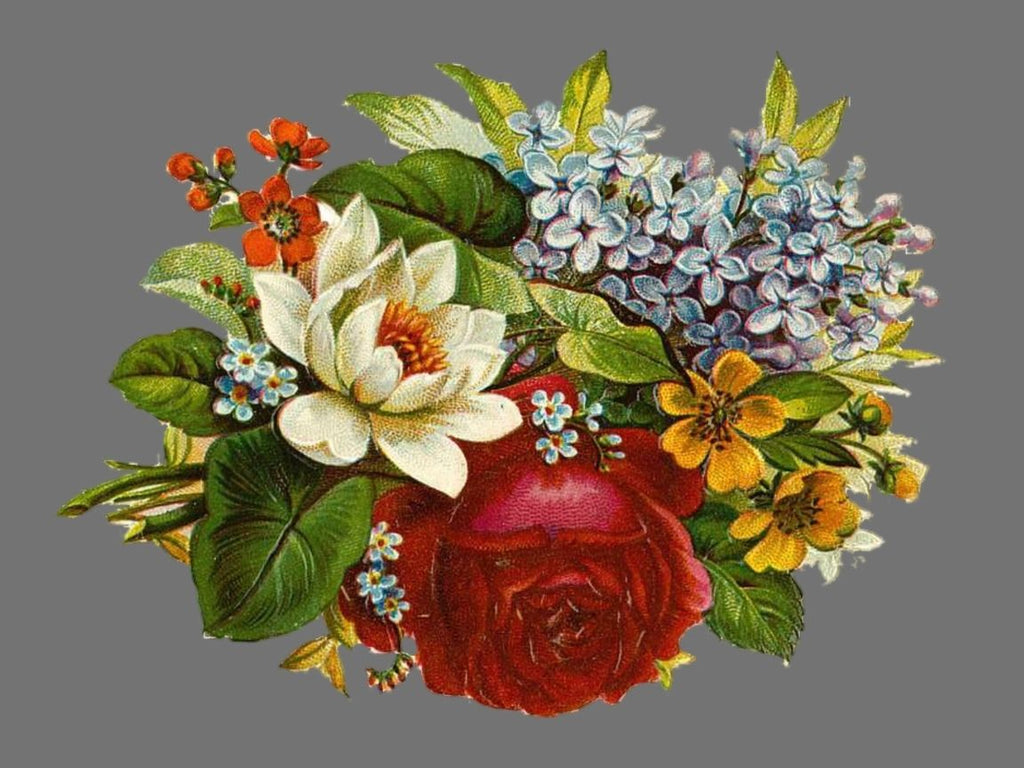
From ancient myths and legends to Victorian high society, flowers have long been imbued with symbolic meaning, and used to convey hidden messages. In this post we explore the history of the language of flowers, and the traditional symbolism of some of our favourite blooms, including those for each of the calendar months!
What is the ‘language of flowers’?
Across time and cultures, trees and flowers have long been used to represent concepts such as enduring love, longing, or rebirth. In Greek mythology, the nymph Clytie is transformed into a sunflower due to her love for the sun god Apollo, forever following his passage across the sky, while in Shakespeare’s Hamlet, Ophelia lists the properties of herbs and flowers: ‘There’s rosemary, that’s for remembrance. Pray you, love, remember. And there is pansies, that’s for thoughts.’ (4.5.151-153)
By the Victorian era the language of flowers (also known as floriography) had become codified by official dictionaries, and was enthusiastically used as a popular, ‘silent language’.
How did the language of flowers become established?
Historians have argued that the origins of the Victorian language of flowers can be found in the Ottoman court of Constantinople, before being brought to Europe by figures such as Lady Mary Wortley Montagu (1689-1762).

The wife of Edward Wortley Montagu, British ambassador to the Ottoman court, Lady Mary joined her husband in Constantinople from 1716 to 1718, writing extensively about her experience in letters to friends, which were published the year after her death to wide public fascination. In a letter written in 1718, she describes the secret, poetic language of the court: ‘There is no colour, no flower, no weed, no fruit, herb, pebble, or feather, that has not a verse belonging to it; and you may quarrel, reproach, or send letters of passion, friendship, or civility, or even of news, without ever inking your fingers.’

The first dictionaries devoted to the language of flowers were, however, published in France in the early nineteenth century, including Le langage des Fleurs, 1819, written by Louise Cortambert under the pen name Madame Charlotte de la Tour, which inspired similar publications in the UK, USA, and beyond. Against the backdrop of a growing interest in plants, botany, and ‘Fern-Fever’, the Victorian public avidly embraced floriography, whether in embroidery, or, at a time of strict social codes, through gifts of flowers exchanged between lovers, and worn by young ladies at balls and gatherings.

Those using the language of flowers, did, however, need to exercise caution, as some floral meanings could differ between dictionaries! Similarly, a flower’s colour could change its meaning entirely: a red rose, for example, signified romantic love, while yellow conveyed friendship, meaning that a suitor must select the shade of blooms he sent his lady with care!
The language of flowers and birth months
Just as we have traditional birthstones for each month of the year, the language of flowers also became linked with the concept of birth month flowers, with one or more flowers assigned to each of the calendar months, all with associated meanings. See our list below to discover the flowers for your birth month, and their symbolism!
JANUARY
Carnation (devotion, love, loyalty); Snowdrop (hope, rebirth)
FEBRUARY
Violet (faithfulness, humility); Primrose (youth, young love)
MARCH
Daffodil; Jonquil (both hope, birth, rejuvenation)
APRIL
Daisy (innocence, purity, loyalty); Sweet Pea (blissful pleasure, farewell)
MAY
Lily of the valley (humility, sweetness); Hawthorn (protection, fertility)
JUNE
Rose (beauty and love); Honeysuckle (happiness)
JULY
Larkspur (positivity), Waterlily (purity)
AUGUST
Gladiolus (honesty), Poppy (remembrance, prosperity, sympathy)
SEPTEMBER
Aster (wisdom); Morning Glory (love, affection)
OCTOBER
Marigold (determination), Cosmos (peace, tranquillity)
NOVEMBER
Chrysanthemum (friendship)
DECEMBER
Narcissus (new beginnings, rebirth), holly (protection)
How can we use the language of flowers today?
Although we might no longer need to wear a daisy to reassure a beau that ‘I share your sentiments’, the language of flowers can bring added meaning to a floral gift, or to a wedding bouquet. In the language of flowers, for example, cornflowers signify 'riches', making them an excellent choice for anyone embarking on a new business venture, while magnolias symbolise 'love of nature'.
If you’re selecting flowers to include in a floral display (or creating felt flowers to give as a present), why not consider their significance in the language of flowers when choosing them? Traditionally, for example, British royal brides always include myrtle, the emblem of matrimony, in their wedding bouquet, while the Duchess of Cambridge added lilies, hyacinths, and ivy, symbolising the return of happiness, steady love, and fidelity and friendship. For a full guide to the language of flowers, you could consult this dictionary from 1884, illustrated by Kate Greenaway, which remains in print today!
Enjoying our blog posts? Join our mailing list to receive every new post straight to your inbox!
At The Crafty Kit Company we hate spam, we never share data and you can unsubscribe from our mailing list at any time.

Comments
Kate Bothwell:
Hi There, Just wanted to say a big thank you for the piece of yellow felt, missing in action from my sunflower kit, purchased along with the other 5 from The Craft Store.
Anne from your Customer Happiness team – you are a Star!!!
Kindest regards
Kate
Sep 22, 2021
Leave a comment